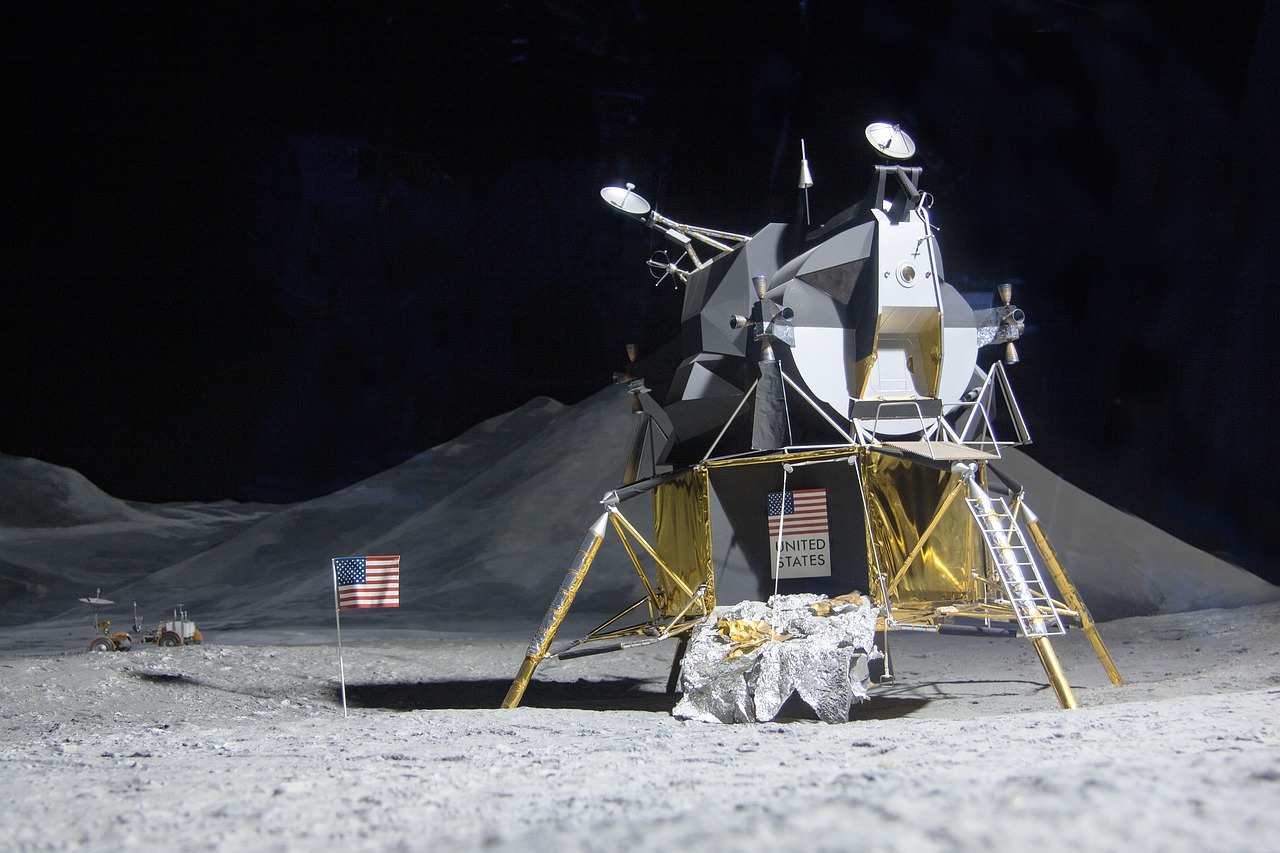The Dawn of Space Exploration: How the Moon Landing Captured Hearts and Minds

The Moon Landing: A Historic Moment
The year 1969 marked a pivotal moment in human history. On July 20, Apollo 11 made its historic lunar landing, making Neil Armstrong and Buzz Aldrin the first humans to set foot on the Moon. This achievement not only showcased technological prowess but also captured the imagination of millions around the globe.
Why It Mattered
The Moon landing was more than just a scientific achievement; it was a symbol of hope and possibility. For many, it represented:
- Human Ingenuity: The culmination of years of research and hard work by scientists, engineers, and astronauts.
- Global Unity: People from different backgrounds and nations came together to witness this monumental event.
- The Space Race: A turning point in the competition between the United States and the Soviet Union.
A Day to Remember
Imagine gathering around the television on that fateful day, watching as Neil Armstrong took those first steps on the lunar surface. The world held its breath. What did that moment mean to you? How did it change your perspective on the universe?
Interactive Reflection
Take a moment to reflect on your own experiences during the Moon landing. Consider these questions:
- Where were you when the landing occurred?
- What emotions did you feel as you watched this historic event unfold?
- How did the Moon landing influence your views on science and exploration?
The Legacy of the Moon Landing
The Moon landing opened the door to further exploration of space. It inspired generations of scientists, engineers, and dreamers. Some key legacies include:
| Legacy | Description |
|---|---|
| Technological Advancements | Development of new technologies that have applications beyond space exploration. |
| Inspiration for Future Generations | Encouraging young people to pursue careers in STEM fields. |
| International Cooperation | Promoting collaboration among countries for peaceful space exploration. |
The Moon landing was a monumental event that not only changed the course of history but also touched the hearts of millions. It reminded us of our potential to achieve the impossible and encouraged us to look toward the stars. As we reflect on this achievement, let us continue to inspire future generations to dream big and explore the unknown.
The Rise of Civil Rights: A Journey Toward Equality That Reshaped Society

Imagine a time when the color of your skin determined your rights and opportunities. The 1960s marked a significant turning point in American history, as individuals from diverse backgrounds united to challenge systemic racism and demand equality. Let’s explore this transformative journey together.
1. The Roots of Discontent
The civil rights movement did not emerge in a vacuum. It was the culmination of years of struggle against segregation and discrimination. Groups like the NAACP, founded in 1909, laid the groundwork for future activism. Do you remember the early struggles for equality?
2. A Catalyst for Change: Brown v. Board of Education
In 1954, the landmark Supreme Court case Brown v. Board of Education declared that racial segregation in public schools was unconstitutional. This ruling was a pivotal moment, energizing activists and providing a legal foundation for future challenges to segregation. How did this decision impact your community?
3. The Montgomery Bus Boycott
The Montgomery Bus Boycott, sparked by Rosa Parks’ refusal to give up her seat in 1955, became a powerful symbol of resistance. For 381 days, African Americans refused to ride the buses, demonstrating the economic power of collective action. Can you recall the stories of those who participated?
4. March on Washington
On August 28, 1963, over 250,000 people gathered for the March on Washington for Jobs and Freedom, where Dr. Martin Luther King Jr. delivered his iconic “I Have a Dream” speech. This event highlighted the urgent need for civil rights legislation. What emotions did this event evoke for you?
5. The Civil Rights Act of 1964
In response to the growing movement, President Lyndon B. Johnson signed the Civil Rights Act into law, prohibiting discrimination based on race, color, religion, sex, or national origin. This was a monumental achievement that paved the way for further advancements. How has this law affected your life or the lives of those around you?
Reflections on Progress
The civil rights movement ignited a flame of hope and resilience. It inspired other movements for equity and justice across the globe. As we reflect on the struggles and triumphs of the past, let us recognize the ongoing journey toward equality. What lessons can we carry forward to future generations?
The Birth of the Internet: Connecting Generations Through the Power of Information

The Birth of the Internet
The Internet, a term that seems ubiquitous today, has its roots deeply embedded in the 1960s. This period marked the inception of a technological revolution that would forever change how we communicate and share information.
What Sparked the Internet?
In the early 1960s, a group of visionary thinkers, including J.C.R. Licklider, began exploring the idea of a network that could facilitate communication between computers. This concept was radical and paved the way for what we now know as the Internet.
The ARPANET: A Leap Forward
In 1969, the first successful message was sent over the ARPANET, a precursor to the Internet, connecting four universities. Imagine sending a message from one computer to another for the first time! It was a monumental step toward connecting people and machines.
How Did This Impact Society?
The emergence of the Internet brought about profound changes in various aspects of life:
- Enhanced Communication: Families could stay in touch over long distances.
- Access to Information: Knowledge became more accessible than ever.
- Business Transformation: Companies began to explore online markets.
Connecting Generations
For many elderly individuals, the Internet may seem overwhelming. However, it offers incredible opportunities for connection:
- Video Calls: Platforms like Skype or Zoom can bridge distances between family members.
- Social Media: Keeping in touch with friends and sharing memories has never been easier.
- Online Resources: Access to health information, hobbies, or community events can enrich daily life.
Embracing the Digital Age
Adapting to the digital world can be a journey. Here are some tips:
- Start Small: Begin with basic tasks like checking email or browsing the web.
- Seek Help: Don’t hesitate to ask family members for assistance.
- Practice Regularly: The more you use the Internet, the more comfortable you will become.
The Internet, born from the innovative spirit of the 1960s, continues to connect generations and empower individuals with information and communication. Embrace this tool, and discover the myriad ways it can enhance your life!
Medical Marvels: Unveiling Breakthroughs that Revolutionized Healthcare
The Rise of Antibiotics
Imagine a world where simple infections could lead to serious illness or even death. Before the 1960s, antibiotics were still in their infancy, with penicillin taking the lead in the 1940s. However, in the 1960s, new antibiotics were developed, such as tetracycline and erythromycin, which expanded treatment options significantly.
This era marked the beginning of a healthcare revolution, making once-deadly diseases manageable. How did these discoveries change your life or the lives of those you know?
Vaccination Advances
Vaccines have always been a cornerstone of public health. The 1960s saw the widespread use of the polio vaccine, developed by Dr. Jonas Salk and later the oral vaccine by Dr. Albert Sabin.
Polio, a crippling disease, was virtually eradicated in many parts of the world thanks to these vaccines. Can you recall a time when vaccines helped protect you or your loved ones?
Heart Surgery Innovations
Heart disease became a leading cause of death in the 1960s. The development of new surgical techniques, including coronary bypass surgery, transformed cardiac care.
Surgeons like Dr. Michael DeBakey and Dr. Denton Cooley pioneered these techniques, allowing patients to live longer, healthier lives. Have you or someone you know benefited from heart surgery?
Medical Imaging Breakthroughs
Imagine being able to see inside the human body without invasive procedures. The introduction of X-rays and the later development of CT scans in the 1970s were foreshadowed by advancements in the 1960s.
These imaging techniques provided doctors with detailed views of internal structures, leading to improved diagnoses. How has medical imaging impacted your healthcare experience?
The Birth of Modern Psychiatry
The understanding of mental health expanded dramatically in the 1960s. The introduction of medications like antidepressants and the development of therapeutic techniques changed how mental illnesses were treated.
Patients began to receive care that focused more on their psychological well-being. What changes have you seen in mental health treatment over the years?
Cultural Renaissance: The Music and Art Movements that Defined a Decade
The 1960s were a vibrant tapestry of creativity and innovation, marking a cultural renaissance that resonated across the globe. This era saw the emergence of influential music and art movements that not only defined the decade but also left a lasting legacy. Let’s explore some pivotal aspects of this cultural explosion.
Music that Changed the World
The music of the 1960s was not just a soundtrack for a generation; it was a powerful voice for social change. Artists challenged societal norms and brought forth a new wave of expression.
- The Beatles: This iconic band redefined music with their innovative sounds and lyrical depth. Their arrival on the scene was marked by the famous Ed Sullivan Show appearance in 1964, which captivated millions.
- Bob Dylan: As a poet and musician, Dylan’s songs like “The Times They Are a-Changin’” became anthems for the Civil Rights Movement, embodying the spirit of change.
- Motown: The Motown sound brought African American artists to the forefront, with stars like Marvin Gaye and The Supremes achieving unprecedented success and breaking racial barriers.
The Visual Arts Emerge
As music flourished, the art scene was equally dynamic, reflecting the turbulent spirit of the times.
- Pop Art: Artists like Andy Warhol and Roy Lichtenstein transformed everyday consumer culture into high art, challenging traditional notions of art and commercialization.
- Abstract Expressionism: This movement, led by artists like Jackson Pollock, emphasized spontaneous, automatic, or subconscious creation, inviting viewers to experience art in a new way.
- Hippie Culture and Art: The counterculture movement gave rise to psychedelic art, characterized by vibrant colors and surreal imagery, often associated with the music festivals of the decade.
Legacy of the 1960s
The creative expressions of the 1960s shaped not just the arts but also societal attitudes. The messages of peace, love, and freedom permeated the music and art of the time, influencing generations to come.
As you reflect on this era, consider how these movements have continued to inspire and influence contemporary artists and musicians. The cultural renaissance of the 1960s was more than a phase; it was a revolutionary breakthrough that paved the way for future generations.
